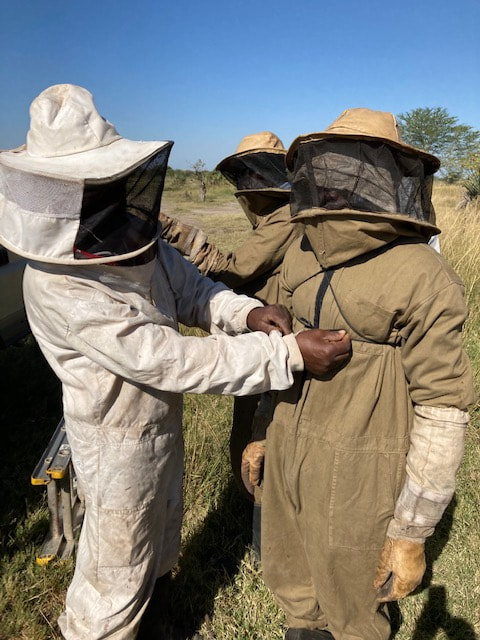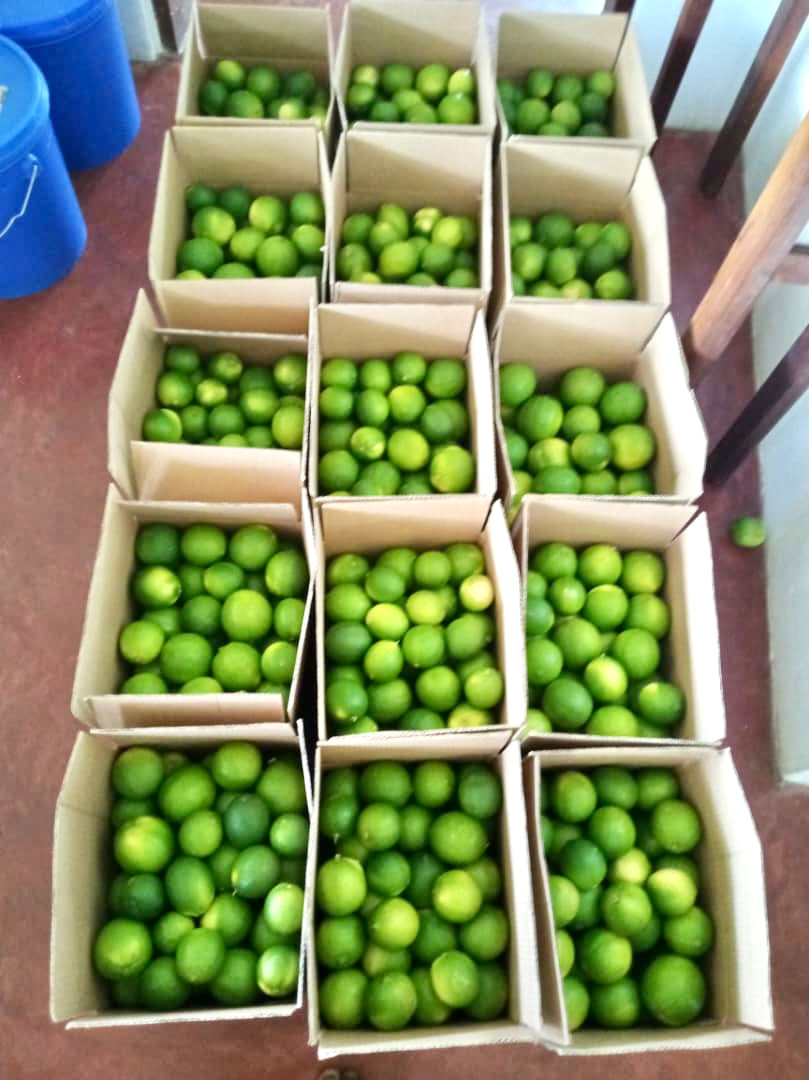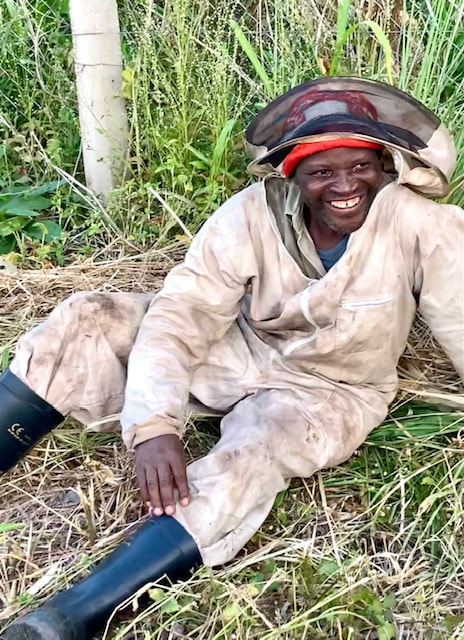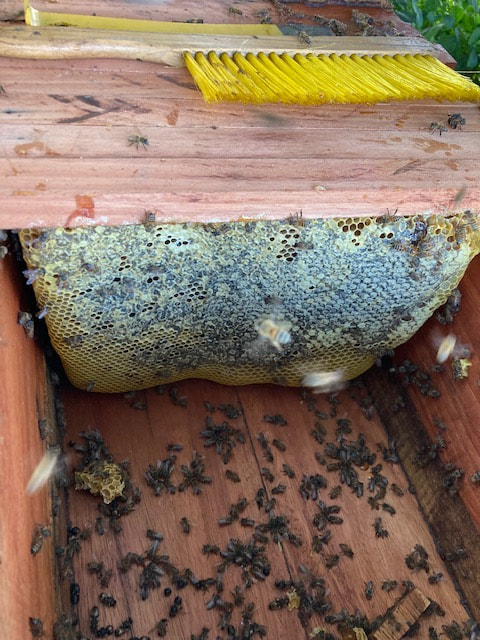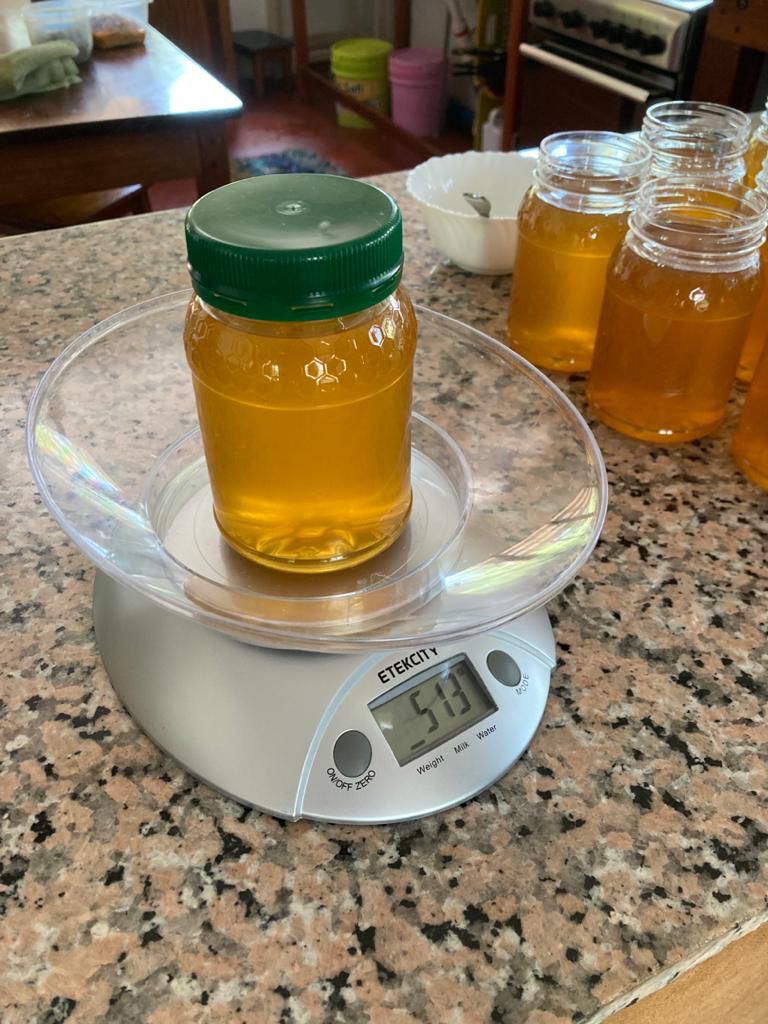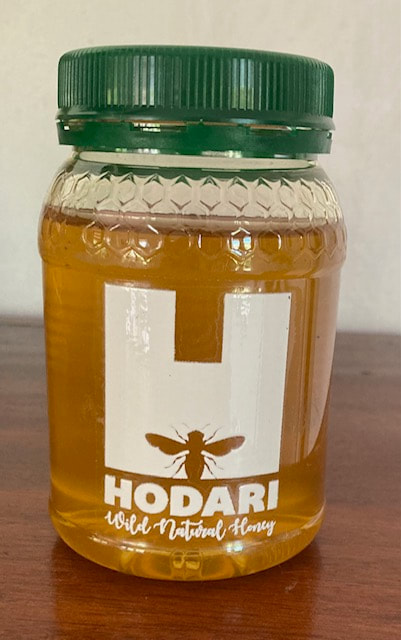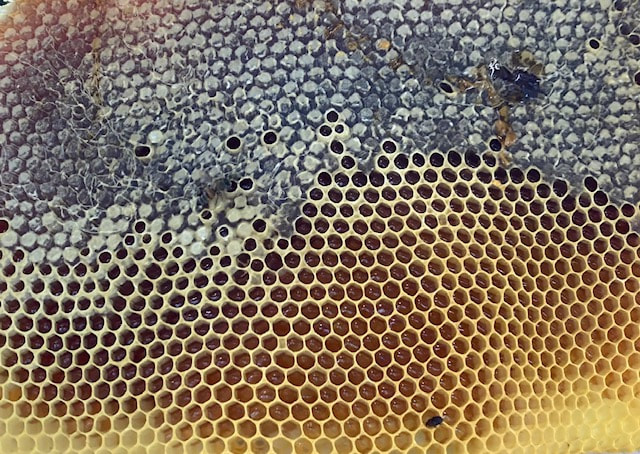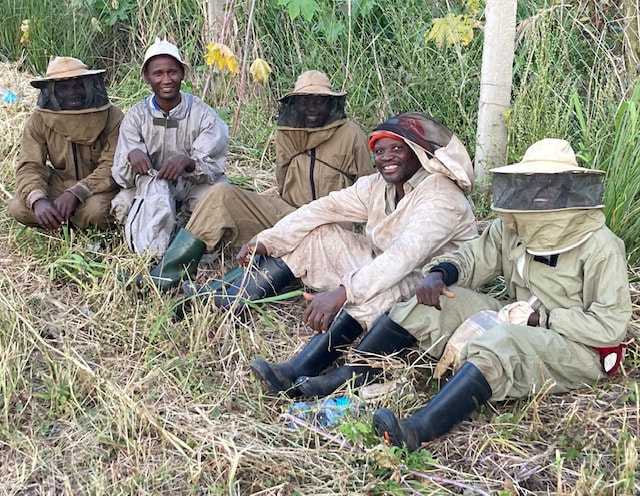Rukwa Valley 2021
|
We have our trainees go together with our skilled training team run by, Jericho Mugalla. He has 15 years of experience and is as courageous as a lion when working with African bees. It’s always a good idea to have someone help check your suit after you put it on. Bees tend to crawl up your body and not down, so any gaps between your veil and suit will be “found out” and investigated.
We didn’t find any queens but had a good look at the brood chambers, as well as the honey chambers in all the hives we opened. All the students saw and understood the desirability of having a queen excluder to separate the queen from the honey chamber. Our trainees once again told us how much they enjoyed our session in the bush harvesting honey. One again, we learned and they learned. There is no end to learning when it comes to beekeeping in Africa. Hope that the pictures with this article were informative and encouraging? Happy Beekeeping! Ted Rabenold Hodari Investments Ltd. |
